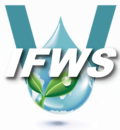
Water Saving
Water saving it to reduce our water footprint. A water footprint is an indicator that looks at both the direct and indirect water use of an individual, business, community, city or country. The Water Footprint Network has provided tools to help us to calculate the water footprints for an individual person, a process, a product’s entire value chain and so on (https://waterfootprint.org/en/). Direct water use refers to the water we see coming out of the tap: the fresh water we use each day for drinking, cooking, showering, washing dishes and clothes, and gardening etc., while indirect water use refers to the water that is used to manufacture the goods that we consume or produce, and the services that we use, as well as all of the water that is made unusable by pollution or wasted by non-use. That includes all of the water used to grow the food that we eat, to produce the things we use in daily life – clothes, books and furniture – and the water needed to produce the energy we use.


